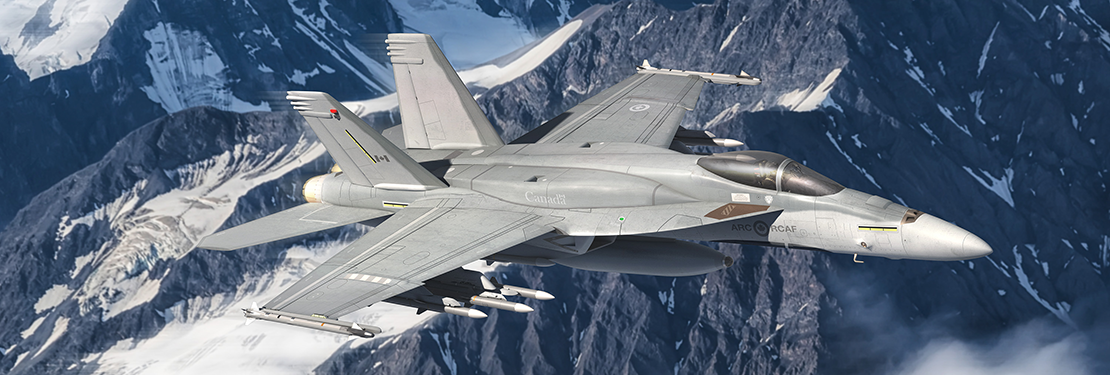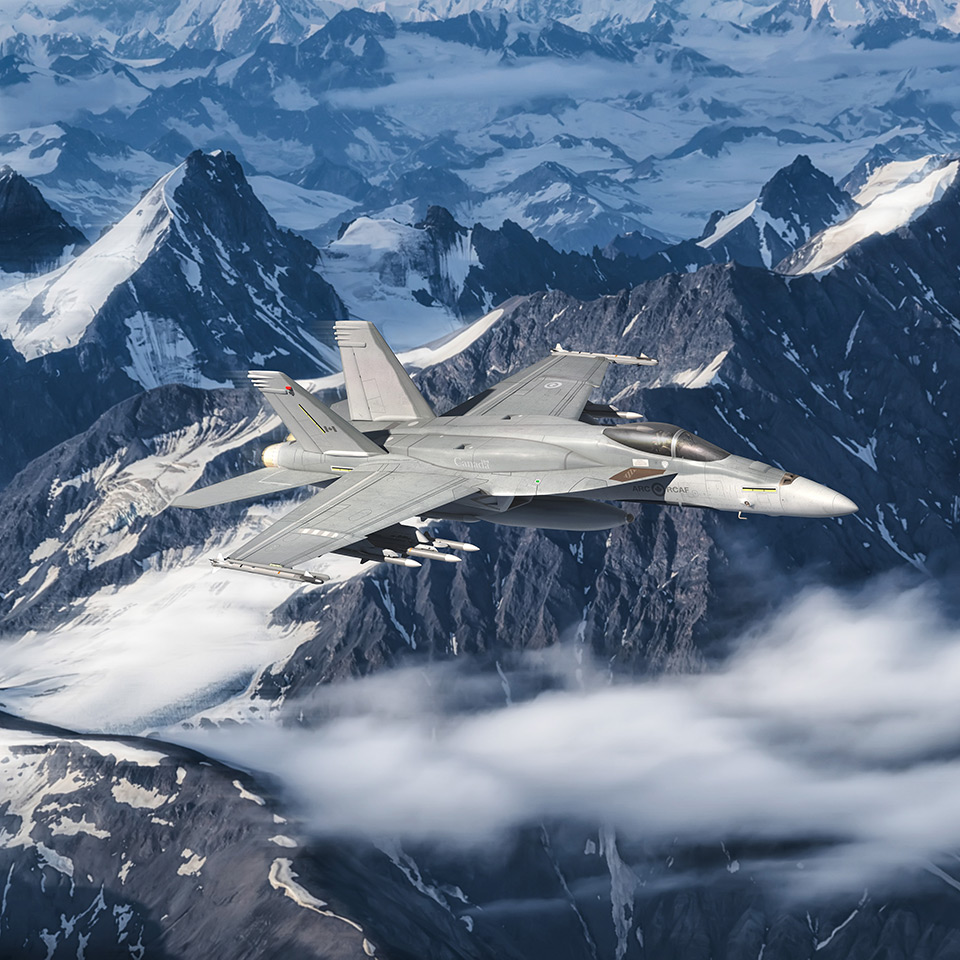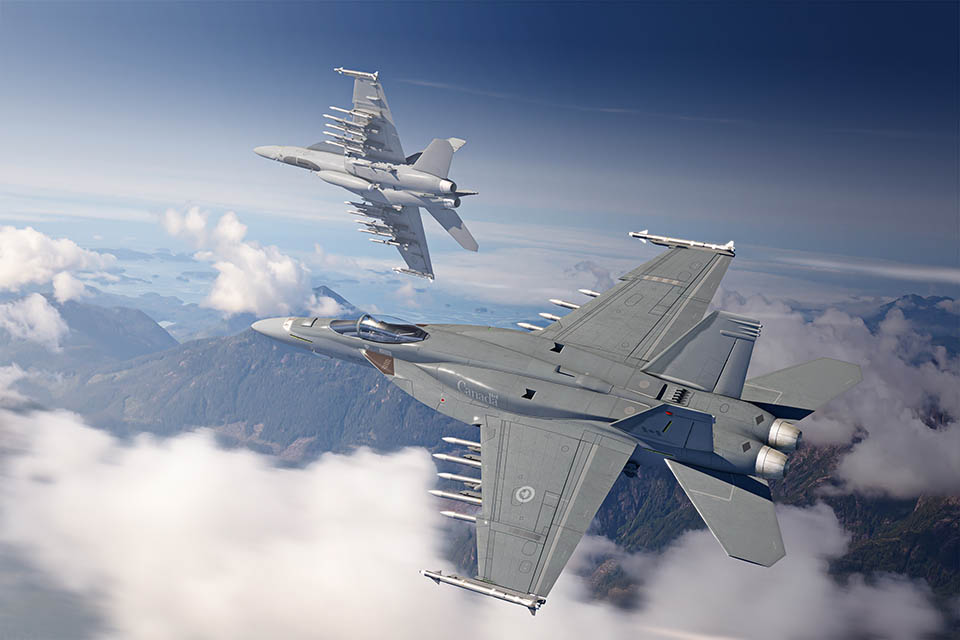The next-generation Super Hornet, uniquely suited for challenging Northern operations, is able to perform virtually every mission in the tactical spectrum, including cruise missile defense, air superiority, maritime strike, day/night strike with precision-guided weapons, fighter escort, close air support, suppression of enemy air defenses, reconnaissance, forward air control and tanker missions.
When multi-role and multi-mission dominance is required in a single platform, the Super Hornet is the only answer. Supported by a 2-engine design, the Super Hornet is ideal for the NORAD mission. Additionally, the aircraft is capable of refueling other Super Hornets and Classic Hornets, serving as a force multiplier for the RCAF.
Advanced processing, networking, survivability and range/payload provide an operational advantage against technologically advanced systems and adversaries provide the following benefits:
- Enhanced network capability works in tandem with advanced cockpit display and onboard sensor fusion to help RCAF pilots process intel and detect long-range threats.
- With 11 weapons stations, the Super Hornet gives pilots extraordinary payload flexibility by carrying 400+ configurations of air-to-air and air-to-ground ordnance – more than any other tactical aircraft.
- Advanced data link and threat detection allow Super Hornet to better receive, process and send key intel.
- An Advanced Cockpit System and long-wave Infrared Search & Track help pilots detect and target threats at long-range for battlespace situational awareness.
- Adaptability to stay ahead of threats and continually incorporate new capabilities to meet the demands of current and future missions.
In comparison, media reports have described the F-35A as experiencing certain operational difficulties in weather conditions such as lighting and thunderstorms, as reported by Defense News and Popular Mechanics, and in cold temperatures, as reported by Military Times.


